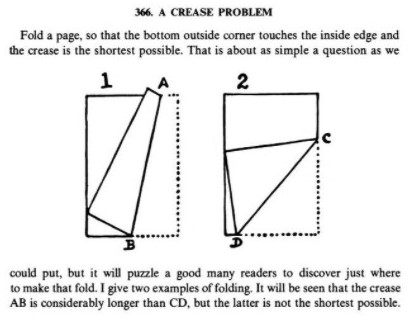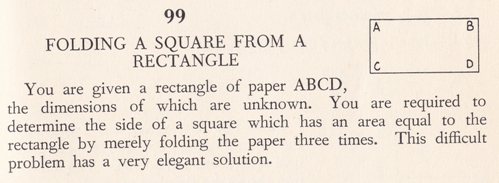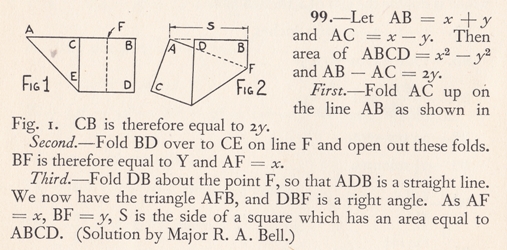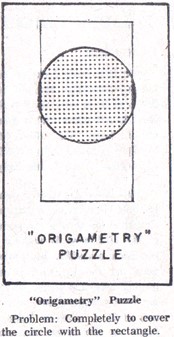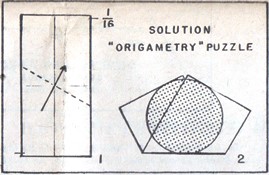| The Public Paperfolding History Project
Last updated 2/4/2024 x |
|||||||
| Mathematical Paperfolding Puzzles | |||||||
| This
page attempts to record what is known about the origin
and history of Mathematical Paperfolding Puzzles ie paper
folding puzzles which can only be solved using
mathematics rather than by trial and error manipulation.
Please contact me if you know any of this information is
incorrect or if you have any other information that
should be added. Thank you. ********** A Calculus Problem in Paperfolding - 1931 onwards
********** 1933 This mathematical folding puzzle appears in 'Diversions and Pastimes' by R M Abraham, which was first published by Constable and Constable in London in 1933. The challenge is to find the length of the edge of a square which would be of the same area as the starting rectangle.
Solution
********** 1966 Volume 2 Issue 3 of 'The Origamian' for Autumn 1966 contains an 'Origametry Puzzle', 'brought to our attention by Steven Barr', and its solution
********** |
|||||||
